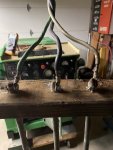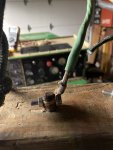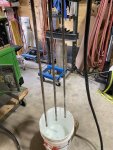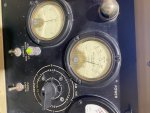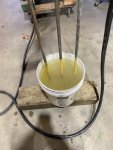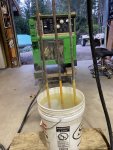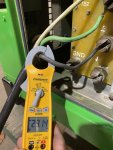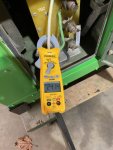loosegravel
Just a retired mechanic who's having fun!
- 504
- 892
- 93
- Location
- Enumclaw, Washington
I’ve been researching how to make an economical way to accurately load test these awesome MEP generators. I came across a 1975 documentation from Caterpillar. It explains how to use a brine to load test generators. It got my attention enough to put it into practice. I used (3) of the grounding rods that usually come with these units. I drilled .300” holes in them and attached a 4 ga. cable with a soldered on eye terminal to the end of each of them with a 1/4 - 20 bolt. I secured and spaced the grounding rods in a piece of 2x4. I hung them above a 5 gallon bucket filled with tap water and about 45 grams of salt for each gallon of water. Just for safety the bucket was placed on a 6x6 piece of lumber off of the floor. I connected the other end of the cables to the MEP-803A generator in three phase and fired it up. I then began lowering the rods into the brine mixture and the percent rated current gauge began climbing right away. I could increase the load by lowering it more into the brine mixture or decrease the load by raising it. Unless someone has an objection with using this method, it seems like an easy way to do a load test on these generators with minimal time and costs!
Attachments
-
70.1 KB Views: 50
-
69.4 KB Views: 49
-
108.9 KB Views: 49
-
134.2 KB Views: 49
-
85.4 KB Views: 49
-
108.7 KB Views: 49



